Who was the Wild Bunch? What crimes can be attributed to the gang? And who participated in those crimes? These questions defy simple answers.William Cruzan

Take the last: Who participated in the gang’s crimes? The bandits almost always escaped, which makes identifying them difficult.
Eyewitnesses are unreliable at best, and they are especially dodgy regarding masked perpetrators. Witnesses to Wild Bunch crimes disagreed on descriptions, even on how many bandits were involved. Those indicted were usually acquitted. So how can we, a century later, determine the truth? We can only try.
On June 24, 1889, Butch Cassidy, Matt Warner and Tom McCarty (abetted by others, perhaps including Bill Madden and Butch’s brother, Dan Parker) robbed the San Miguel Valley Bank in Telluride, Colorado, of around $20,000. Considering that trio as the root of the Wild Bunch, we can fold in later crimes in which they participated.
of around $20,000. Considering that trio as the root of the Wild Bunch, we can fold in later crimes in which they participated.
 of around $20,000. Considering that trio as the root of the Wild Bunch, we can fold in later crimes in which they participated.
of around $20,000. Considering that trio as the root of the Wild Bunch, we can fold in later crimes in which they participated.
Tom McCarty and Matt Warner along with Tom’s brothers Bill and George, his nephew Fred, his brother-in-law Hank Vaughan, and George’s wife Nellie staged about 10 holdups in Oregon, Washington and Colorado between 1890 and 1893. The outlaws’ tastes were catholic: They hit trains, banks, casinos and stores.  The gang dissolved after Fred and Bill died during an 1893 attempt on the Farmers and Merchants Bank in Delta, Colorado.
The gang dissolved after Fred and Bill died during an 1893 attempt on the Farmers and Merchants Bank in Delta, Colorado.
 The gang dissolved after Fred and Bill died during an 1893 attempt on the Farmers and Merchants Bank in Delta, Colorado.
The gang dissolved after Fred and Bill died during an 1893 attempt on the Farmers and Merchants Bank in Delta, Colorado.
The Rocky Mountain branch of the Wild Bunch made an inauspicious start on November 29, 1892, near Malta, Montana, when three men—probably the Sundance Kid, Harry Bass and Bill Madden—held up the Great Northern No. 32 and netted less than $100. Bass and Madden were caught and implicated Sundance, who had escaped.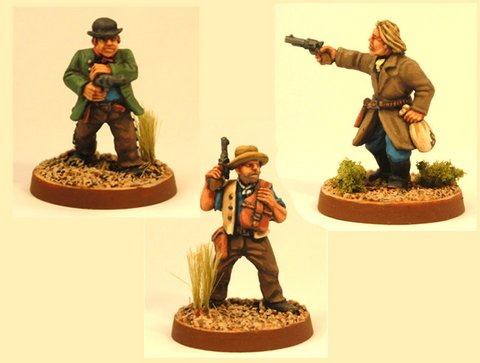

Butch Cassidy’s outlaw career resumed in 1896, after a two-year prison term for horse theft. On August 13, he, Elzy Lay and Bub Meeks robbed Idaho’s Bank of Montpelier of $7,165. The money went to attorneys defending Matt Warner for murder.
of $7,165. The money went to attorneys defending Matt Warner for murder.  On April 21, 1897, Butch, Lay and perhaps Meeks and Joe Walker stole a $9,860 mine payroll in Castle Gate, Utah.
On April 21, 1897, Butch, Lay and perhaps Meeks and Joe Walker stole a $9,860 mine payroll in Castle Gate, Utah.
 On April 21, 1897, Butch, Lay and perhaps Meeks and Joe Walker stole a $9,860 mine payroll in Castle Gate, Utah.
On April 21, 1897, Butch, Lay and perhaps Meeks and Joe Walker stole a $9,860 mine payroll in Castle Gate, Utah.
On June 28, 1897, six bandits flubbed a holdup of the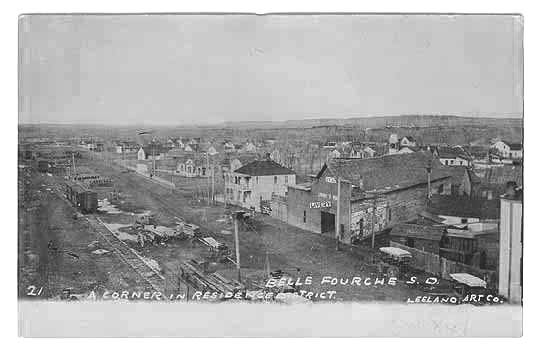 Butte County Bank in Belle Fourche, South Dakota. Tom O’Day
Butte County Bank in Belle Fourche, South Dakota. Tom O’Day 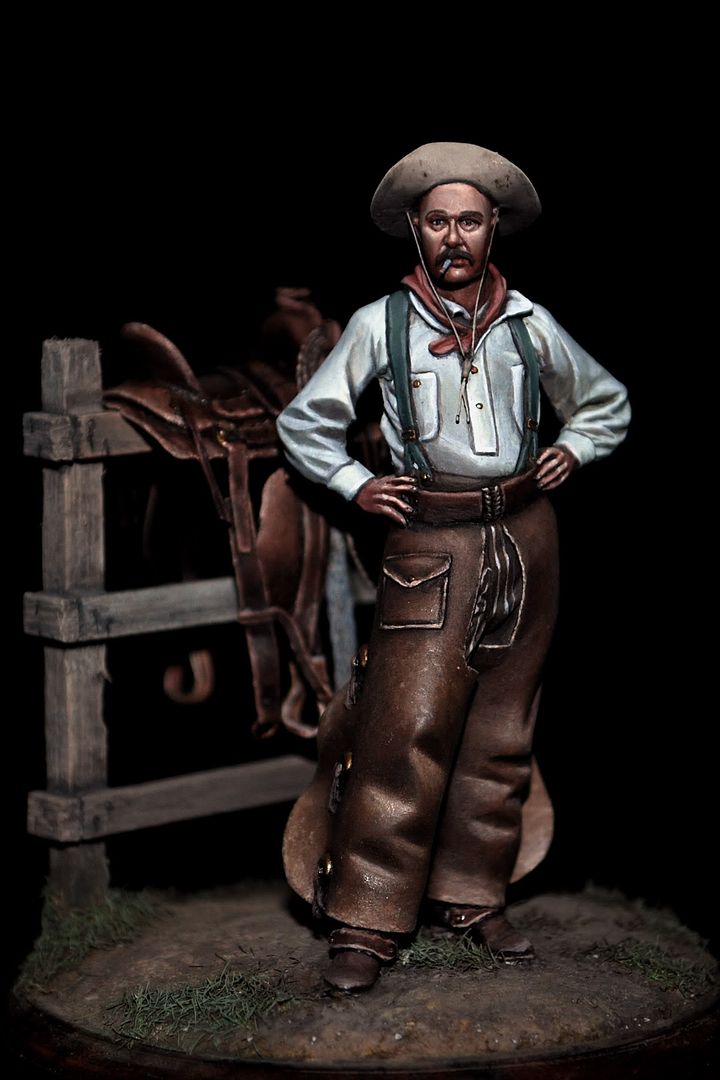 was caught hiding in a saloon privy. His cohorts included Walt Punteney, George “Flat Nose” Currie, Harvey Logan
was caught hiding in a saloon privy. His cohorts included Walt Punteney, George “Flat Nose” Currie, Harvey Logan  (making his debut in the Wild Bunch) and Sundance. Butch may have participated, but it’s doubtful. The bungling bandits got $97. O’Day was tried and acquitted; Punteney was arrested, but the charges were dropped.
(making his debut in the Wild Bunch) and Sundance. Butch may have participated, but it’s doubtful. The bungling bandits got $97. O’Day was tried and acquitted; Punteney was arrested, but the charges were dropped.
 Butte County Bank in Belle Fourche, South Dakota. Tom O’Day
Butte County Bank in Belle Fourche, South Dakota. Tom O’Day  was caught hiding in a saloon privy. His cohorts included Walt Punteney, George “Flat Nose” Currie, Harvey Logan
was caught hiding in a saloon privy. His cohorts included Walt Punteney, George “Flat Nose” Currie, Harvey Logan  (making his debut in the Wild Bunch) and Sundance. Butch may have participated, but it’s doubtful. The bungling bandits got $97. O’Day was tried and acquitted; Punteney was arrested, but the charges were dropped.
(making his debut in the Wild Bunch) and Sundance. Butch may have participated, but it’s doubtful. The bungling bandits got $97. O’Day was tried and acquitted; Punteney was arrested, but the charges were dropped.
Butch’s reputation outpaced his criminal record. In a story headlined “King of the Bandits,” a Chicago daily declared in early 1898 that “Butch Cassidy is a bad man.” Not just any bad man, but “the worst man” in Utah, Colorado, Idaho and Wyoming, the leader of a gang of 500 outlaws “subdivided into five bands.”
On July 14 that year, a trio of bandits, said to have been Sundance, Logan and Currie (though they were never identified), held up the Southern Pacific No. 1 near Humboldt, Nevada,  escaping with $450. Two other men were tried for the holdup and acquitted.
escaping with $450. Two other men were tried for the holdup and acquitted.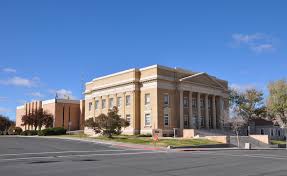
 escaping with $450. Two other men were tried for the holdup and acquitted.
escaping with $450. Two other men were tried for the holdup and acquitted.
The Humboldt threesome struck again on April 3, 1899, robbing a saloon in Elko, Nevada, of several hundred dollars. The Wild Bunch holding up saloons? Maybe not. (Unsolved crimes are
of several hundred dollars. The Wild Bunch holding up saloons? Maybe not. (Unsolved crimes are  often attributed to famous outlaws.) Three local cowboys were tried for the robbery and acquitted.
often attributed to famous outlaws.) Three local cowboys were tried for the robbery and acquitted.
 of several hundred dollars. The Wild Bunch holding up saloons? Maybe not. (Unsolved crimes are
of several hundred dollars. The Wild Bunch holding up saloons? Maybe not. (Unsolved crimes are  often attributed to famous outlaws.) Three local cowboys were tried for the robbery and acquitted.
often attributed to famous outlaws.) Three local cowboys were tried for the robbery and acquitted.
Meanwhile, other outlaws were roaming the Southwest. Three Texas delinquents, Tom “Black Jack” Ketchum, Dave Atkins and Will Carver, held up a Southern Pacific train near Lozier, Texas,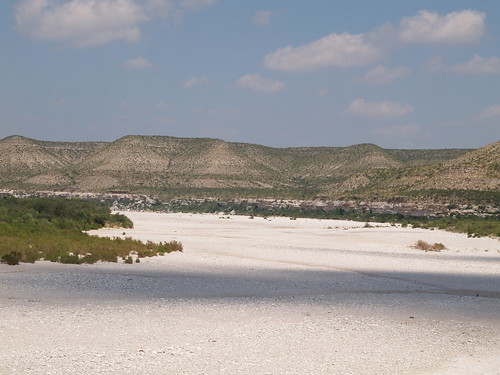 on May 14, 1897, taking upwards of $42,000. Reinforced by Tom’s brother, Sam, and possibly Bruce “Red” Weaver, they robbed the Gulf, Colorado & Santa Fe No. 1
on May 14, 1897, taking upwards of $42,000. Reinforced by Tom’s brother, Sam, and possibly Bruce “Red” Weaver, they robbed the Gulf, Colorado & Santa Fe No. 1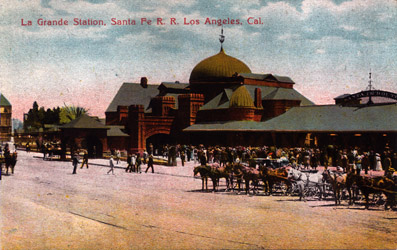 on September 3, 1897, of several thousand dollars. Weaver was later tried for the crime and acquitted.
on September 3, 1897, of several thousand dollars. Weaver was later tried for the crime and acquitted.
 on May 14, 1897, taking upwards of $42,000. Reinforced by Tom’s brother, Sam, and possibly Bruce “Red” Weaver, they robbed the Gulf, Colorado & Santa Fe No. 1
on May 14, 1897, taking upwards of $42,000. Reinforced by Tom’s brother, Sam, and possibly Bruce “Red” Weaver, they robbed the Gulf, Colorado & Santa Fe No. 1 on September 3, 1897, of several thousand dollars. Weaver was later tried for the crime and acquitted.
on September 3, 1897, of several thousand dollars. Weaver was later tried for the crime and acquitted.
Success bred carelessness. On December 9, 1897, five bandits, probably the Ketchum brothers, Carver, Atkins and Edward H. Cullen, attempted to rob the Southern Pacific No. 20 near , but met a fusillade from armed guards. Cullen was killed; the other four, though wounded, escaped. Unchastened, four men—probably the Ketchum brothers and perhaps Carver and Ben Kilpatrick—robbed the Texas Pacific No. 3 at Mustang Creek, Texas,  on July 1, 1898, grabbing between $1,000 and $50,000 in cash. (Victims were not forthcoming about how much was stolen. Sometimes employees pocketed overlooked money and included it in the amount said to have been taken by the bandits. At other times, initial accounts lowballed the sums, and the truth came out decades later.)
on July 1, 1898, grabbing between $1,000 and $50,000 in cash. (Victims were not forthcoming about how much was stolen. Sometimes employees pocketed overlooked money and included it in the amount said to have been taken by the bandits. At other times, initial accounts lowballed the sums, and the truth came out decades later.)

Elzy Lay joined the gang just in time for its train-robbing blitz to come to a bloody halt. On July 11, 1899, Sam Ketchum, Lay and Carver overpowered the crew of the Colorado & Southern No. 1 and galloped off with some $30,000. (Weaver, thought to have been standing guard nearby, separated from the others.) After the holdup, the three principals were surprised by a posse. When the dust settled, one posse member was dead and two were wounded, one mortally; Sam Ketchum was  mortally wounded; Lay was wounded and later captured; and Carver escaped. (Some say the third bandit was Harvey Logan, not Carver.)
mortally wounded; Lay was wounded and later captured; and Carver escaped. (Some say the third bandit was Harvey Logan, not Carver.)
 mortally wounded; Lay was wounded and later captured; and Carver escaped. (Some say the third bandit was Harvey Logan, not Carver.)
mortally wounded; Lay was wounded and later captured; and Carver escaped. (Some say the third bandit was Harvey Logan, not Carver.)
Tom Ketchum, meanwhile, picked an inauspicious moment to launch a solo career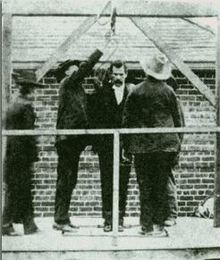 . On August 16, 1899, he attempted holding up the Colorado & Southern No. 1 near Folsom, New Mexico, but was shot, captured, tried, convicted and hanged.
. On August 16, 1899, he attempted holding up the Colorado & Southern No. 1 near Folsom, New Mexico, but was shot, captured, tried, convicted and hanged.
 . On August 16, 1899, he attempted holding up the Colorado & Southern No. 1 near Folsom, New Mexico, but was shot, captured, tried, convicted and hanged.
. On August 16, 1899, he attempted holding up the Colorado & Southern No. 1 near Folsom, New Mexico, but was shot, captured, tried, convicted and hanged.
These calamities should have been a lesson to Carver and Kilpatrick, but they merely moved north and joined the Wild Bunch proper.below doolin

The first crime that consolidated what was left of the various gangs was the June 2, 1899, robbery of the Union Pacific Overland Flyer No. 1 near Wilcox, Wyoming. 
This holdup, which yielded between $3,400 and $50,000, made the Hole-in-the-Wall Gang nationally famous. “They were lawless men who have lived long in the crags and become like eagles,” averred the New York Herald. Yet we can’t place Butch or Sundance at the scene with any precision. Witnesses reported six masked men; most historians count George Currie, Harvey Logan, his brother Lonnie Logan and their cousin Bob Lee among them.

This holdup, which yielded between $3,400 and $50,000, made the Hole-in-the-Wall Gang nationally famous. “They were lawless men who have lived long in the crags and become like eagles,” averred the New York Herald. Yet we can’t place Butch or Sundance at the scene with any precision. Witnesses reported six masked men; most historians count George Currie, Harvey Logan, his brother Lonnie Logan and their cousin Bob Lee among them.
The lawless eagles swept down again on August 29, 1900, robbing the Union Pacific Overland Flyer No. 3 near Tipton, Wyoming,  of between $55.40 (the initial account) and $55,000 (a later report). The five bandits included Butch and probably Sundance and Harvey Logan. Also suspected were Ben Kilpatrick, Tom Welch and Billy Rose. Tipton was the first crime in which Butch and Sundance are generally agreed to have teamed up. They were just six months from fleeing the country.
of between $55.40 (the initial account) and $55,000 (a later report). The five bandits included Butch and probably Sundance and Harvey Logan. Also suspected were Ben Kilpatrick, Tom Welch and Billy Rose. Tipton was the first crime in which Butch and Sundance are generally agreed to have teamed up. They were just six months from fleeing the country.
 of between $55.40 (the initial account) and $55,000 (a later report). The five bandits included Butch and probably Sundance and Harvey Logan. Also suspected were Ben Kilpatrick, Tom Welch and Billy Rose. Tipton was the first crime in which Butch and Sundance are generally agreed to have teamed up. They were just six months from fleeing the country.
of between $55.40 (the initial account) and $55,000 (a later report). The five bandits included Butch and probably Sundance and Harvey Logan. Also suspected were Ben Kilpatrick, Tom Welch and Billy Rose. Tipton was the first crime in which Butch and Sundance are generally agreed to have teamed up. They were just six months from fleeing the country.
Three weeks later, on September 19, three or four bandits struck the First National Bank in Winnemucca, Nevada,  collecting between $32 and $40,000. Sundance, Carver and Logan are thought to have participated, but some suspected local miscreants, and others called it an inside job. The bank’s head cashier, George Nixon, at various times agreed and disagreed that Butch was present. A few years later, a newspaper recounted a conversation in which Sundance supposedly disclosed that he, Butch and Carver were responsible. Stories that the bandits had camped near Winnemucca as early as September 9, however, have prompted researchers to question whether Butch could have been at both Tipton and Winnemucca, 600 miles apart.
collecting between $32 and $40,000. Sundance, Carver and Logan are thought to have participated, but some suspected local miscreants, and others called it an inside job. The bank’s head cashier, George Nixon, at various times agreed and disagreed that Butch was present. A few years later, a newspaper recounted a conversation in which Sundance supposedly disclosed that he, Butch and Carver were responsible. Stories that the bandits had camped near Winnemucca as early as September 9, however, have prompted researchers to question whether Butch could have been at both Tipton and Winnemucca, 600 miles apart.
 collecting between $32 and $40,000. Sundance, Carver and Logan are thought to have participated, but some suspected local miscreants, and others called it an inside job. The bank’s head cashier, George Nixon, at various times agreed and disagreed that Butch was present. A few years later, a newspaper recounted a conversation in which Sundance supposedly disclosed that he, Butch and Carver were responsible. Stories that the bandits had camped near Winnemucca as early as September 9, however, have prompted researchers to question whether Butch could have been at both Tipton and Winnemucca, 600 miles apart.
collecting between $32 and $40,000. Sundance, Carver and Logan are thought to have participated, but some suspected local miscreants, and others called it an inside job. The bank’s head cashier, George Nixon, at various times agreed and disagreed that Butch was present. A few years later, a newspaper recounted a conversation in which Sundance supposedly disclosed that he, Butch and Carver were responsible. Stories that the bandits had camped near Winnemucca as early as September 9, however, have prompted researchers to question whether Butch could have been at both Tipton and Winnemucca, 600 miles apart.
Butch and Sundance left for Argentina in February 1901. Today popularly considered the leaders of the Wild Bunch, they had teamed up on only two or three robberies. As crime sprees go, it was not much of a run. Their colleagues sputtered on, but within a couple of years most were dead or in jail.
On July 3, 1901, what was left of the gang on North American soil attacked the Great Northern Coast Flyer No. 3 near Wagner, Montana, fleeing with about $40,000. There were four to six bandits, including Harvey Logan, Ben Kilpatrick and O.C. Hanks.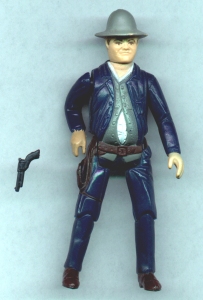 Kilpatrick and Logan went to prison for passing bank notes from the holdup, and Hanks died the next year in a confrontation with authorities in Texas.
Kilpatrick and Logan went to prison for passing bank notes from the holdup, and Hanks died the next year in a confrontation with authorities in Texas.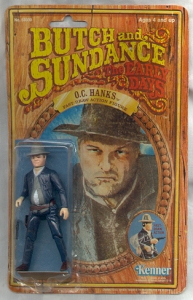
 Kilpatrick and Logan went to prison for passing bank notes from the holdup, and Hanks died the next year in a confrontation with authorities in Texas.
Kilpatrick and Logan went to prison for passing bank notes from the holdup, and Hanks died the next year in a confrontation with authorities in Texas.
Logan, who had escaped from jail in 1903, rounded up two friends, probably from Ketchum territory,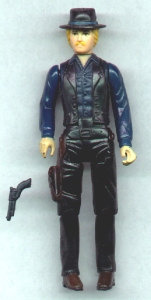 for what would be his farewell appearance,
for what would be his farewell appearance,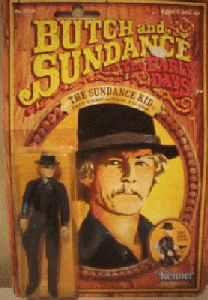 the botched holdup of the Denver & Rio Grande near
the botched holdup of the Denver & Rio Grande near 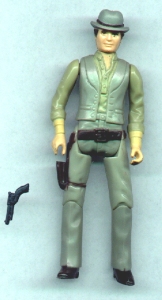 Parachute, Colorado,
Parachute, Colorado,
 on June 7, 1904. Wounded and cornered, Logan committed suicide. The list of possible accomplices is long, but George Kilpatrick (Ben’s brother) and Dan Sheffield are high on it. George is thought to have been mortally wounded, although his body was never found.
on June 7, 1904. Wounded and cornered, Logan committed suicide. The list of possible accomplices is long, but George Kilpatrick (Ben’s brother) and Dan Sheffield are high on it. George is thought to have been mortally wounded, although his body was never found.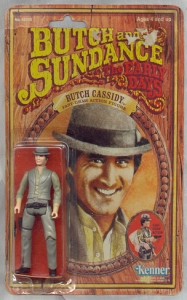
 for what would be his farewell appearance,
for what would be his farewell appearance, the botched holdup of the Denver & Rio Grande near
the botched holdup of the Denver & Rio Grande near  Parachute, Colorado,
Parachute, Colorado, on June 7, 1904. Wounded and cornered, Logan committed suicide. The list of possible accomplices is long, but George Kilpatrick (Ben’s brother) and Dan Sheffield are high on it. George is thought to have been mortally wounded, although his body was never found.
on June 7, 1904. Wounded and cornered, Logan committed suicide. The list of possible accomplices is long, but George Kilpatrick (Ben’s brother) and Dan Sheffield are high on it. George is thought to have been mortally wounded, although his body was never found.
The northern hemisphere’s Wild Bunch was kaput, except for one footnote. Ben Kilpatrick, released from prison in 1911, joined former cellmate Ole Beck to rob the Galveston, Harrisburg & San Antonio No. 9 near Sanderson, Texas, 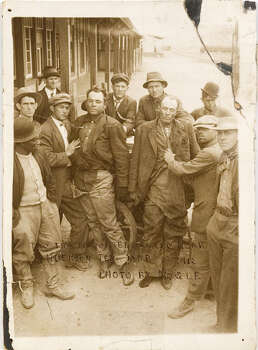 on March 13, 1912. Quick-witted Wells Fargo messenger David Trousdale fatally bludgeoned Kilpatrick with an ice mallet, borrowed his rifle, and dropped Beck.
on March 13, 1912. Quick-witted Wells Fargo messenger David Trousdale fatally bludgeoned Kilpatrick with an ice mallet, borrowed his rifle, and dropped Beck.
 on March 13, 1912. Quick-witted Wells Fargo messenger David Trousdale fatally bludgeoned Kilpatrick with an ice mallet, borrowed his rifle, and dropped Beck.
on March 13, 1912. Quick-witted Wells Fargo messenger David Trousdale fatally bludgeoned Kilpatrick with an ice mallet, borrowed his rifle, and dropped Beck.
So, what was the Wild Bunch? Between the late 1880s and early 1900s, there were several gangs, comprising several dozen outlaws, who are part of the Wild Bunch story. The McCarty-Warner and Ketchum Gangs had more coherence than the Rocky Mountain Wild Bunch, perhaps because they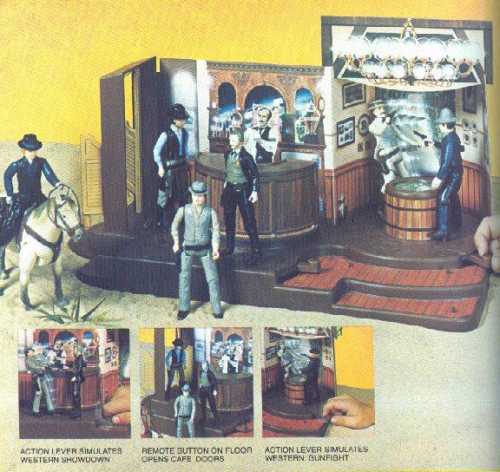 were family based. All the bandits put together committed or attempted more than two dozen
were family based. All the bandits put together committed or attempted more than two dozen  holdups. They probably didn’t do some they’ve been blamed for, and they probably pulled others they’ve never been accused of.
holdups. They probably didn’t do some they’ve been blamed for, and they probably pulled others they’ve never been accused of.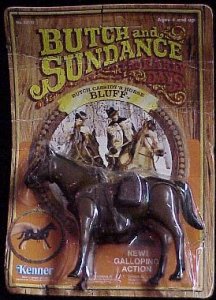
 were family based. All the bandits put together committed or attempted more than two dozen
were family based. All the bandits put together committed or attempted more than two dozen  holdups. They probably didn’t do some they’ve been blamed for, and they probably pulled others they’ve never been accused of.
holdups. They probably didn’t do some they’ve been blamed for, and they probably pulled others they’ve never been accused of.
Of the approximately 20 outlaws who can be counted in the Rocky Mountain Wild Bunch during its heyday, the 1896-1901 Montpelier to Wagner era, few participated in crimes together more than a couple of times, and the gang’s holdups in that period numbered a scant five to seven. Butch and Sundance—surprisingly, given their later iconic status as a joined-at-the-holster outlaw duo—teamed up in the United States no more than three times. If they hadn’t gone to South America and died together, the 1969 movie would never have been made, nor this article written.
“In Search of Butch Cassidy” made the case that Cassidy and his partner, the Sundance Kid, were not killed in 1908 in a shootout with a Bolivian cavalry troop — the fate that was etched into the popular imagination by the movie starring Robert Redford and Paul Newman.
“In Search of Butch Cassidy” made the case that Cassidy and his partner, the Sundance Kid, were not killed in 1908 in a shootout with a Bolivian cavalry troop — the fate that was etched into the popular imagination by the movie starring Robert Redford and Paul Newman.
Pointer argued that Cassidy, whose given name was Robert LeRoy Parker, survived the shootout, returned to the United States and lived peacefully in Spokane, Wash. , under the alias William T. Phillips until his death in 1937.
, under the alias William T. Phillips until his death in 1937.
 , under the alias William T. Phillips until his death in 1937.
, under the alias William T. Phillips until his death in 1937.
Pointer’s book did well. It was published by the prestigious University of Oklahoma Press, was translated into Spanish and Japanese, sold something like 30,000 copies and remains in print.
Now living in Billings, Pointer recently published a second book on Butch Cassidy. This one might be even more provocative — and it turns Pointer’s earlier theories about Butch Cassidy on their head.
The new book consists of the complete manuscript “The Bandit Invincible: The Story of Butch Cassidy,” written by William T. Phillips, with extensive notes and an introduction by Pointer.
When Pointer wrote his earlier book, he had access only to an abridged version of that manuscript. His reading of the abridged version, and his other research, had convinced Pointer that Phillips was actually Butch Cassidy, and that he was telling his own life story in “The Bandit Invincible.”
But his study of the complete manuscript, and his study of photographs of Cassidy and some of his associates, threw all of his previous theories into confusion. Previously, he thought Cassidy looked enough like Phillips to convince him they were one and the same man.
Then, last August, he obtained a photo of an associate of Butch Cassidy by the name of William T. Wilcox.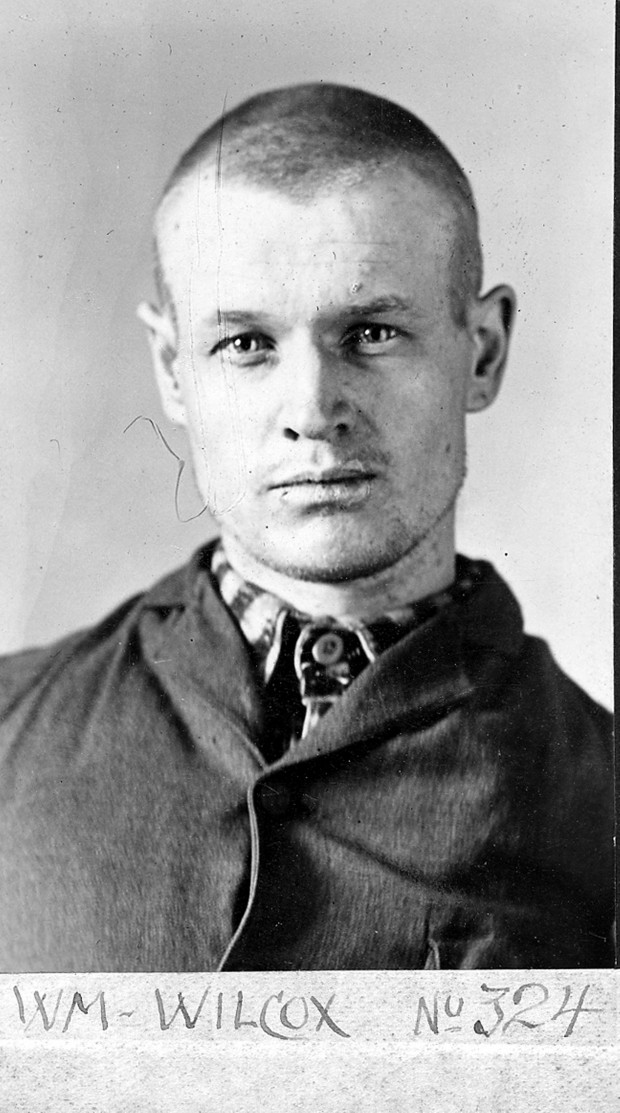 Wilcox, he realized, was actually the same person as Phillips, and Phillips was not Cassidy.
Wilcox, he realized, was actually the same person as Phillips, and Phillips was not Cassidy.
 Wilcox, he realized, was actually the same person as Phillips, and Phillips was not Cassidy.
Wilcox, he realized, was actually the same person as Phillips, and Phillips was not Cassidy.
Also, the complete manuscript contained numerous descriptions of robberies and other exploits supposedly involving Butch Cassidy at a time when Cassidy not only wasn’t in the state in question, but was already in South America.
Pointer no longer has a firm opinion on the fate of Butch Cassidy, but his suppositions come down to this: He thinks Wilcox was in prison in Laramie, Wyo., with Robert LeRoy Parker, and Parker was then using the alias George Cassidy.
Somehow, Pointer said, Parker and Wilcox both started using the alias Butch Cassidy, perhaps to throw off the authorities. And when Wilcox/Phillips sat down to write “The Bandit Invincible,” Pointer believes, he actually narrated a dual biography of himself and the Butch Cassidy known to history, blending elements of both their lives in the tale.
It’s complicated and confusing, as Pointer is the first to admit. But history consists of the information available at any given time, and his new book, which offers Phillips’ long-lost manuscript to the world, doesn’t so much answer questions as open up new lines of inquiry.
Pointer is a native of Sheridan, Wyo., and when the movie “Butch Cassidy and the Sundance Kind” came out in 1969, he was living in Lander, Wyo., where he taught life sciences and coached the rodeo team at Central Wyoming College.
He started hearing from locals that the movie was lots of fun but mostly hogwash. Many people, Pointer said, talked matter-of-factly about how Cassidy often came back to the Lander area to visit old friends long after his supposed demise in Bolivia.
One of Pointer’s students said his grandmother was an old girlfriend of Butch Cassidy, and she had talked of his coming to see her in the 1930s. All that talk fired Pointer’s imagination, and it led to his first book.
Pointer’s research brought him into contact with James K. Dullenty, a reporter who wrote an investigative series on William T. Phillips for the Spokane Daily Chronicle. It was Dullenty who was given the abridged manuscript of “The Bandit Invincible,” provided by a longtime friend of Phillips, and Dullenty allowed Pointer to use the manuscript for his first book on Butch Cassidy.
Pointer wasn’t planning to write another book about Cassidy. He switched from teaching college to working for the government, first for the Bureau of Land Management and then the National Park Service, from which he retired in 1997. He also wrote a few more books, including a work on the painter Harry Jackson and a book called “Rodeo Champions.”
Meanwhile, in Provo, Utah, Brent Ashworth, a collector of antiquarian books and Western memorabilia, had become infatuated with Butch Cassidy after reading Pointer’s first book in 1988. Over the years he amassed a sizable collection of materials related to Cassidy and his Hole in the Wall Gang.
Like Pointer, Ashworth was aware that at some point the manuscript of “The Bandit Invincible” had been condensed from a 900-page original. Then, in 2009, Ashworth punched in the title of the manuscript on the Internet — and up popped an offer to sell the long-lost work on eBay.
Ashworth bought the manuscript — it was typed, and its 220 pages jibed with the length of the 900-page handwritten original — for an undisclosed price from the family of a deceased book dealer. The dealer supposedly bought the manuscript from Phillips’ widow, and the whole thing was typed on the backside of W.T. Phillips General Machine Work stationery.
Ashworth eventually got a hold of Pointer for help in authenticating the manuscript, and in 2011 Ashworth turned over a copy of the manuscript to Pointer to prepare for publication. He also gave Pointer access to his entire Cassidy collection.
Pointer and his wife, Dotti, put in countless hours preparing the manuscript for publication, starting with a word-by-word comparison of the abridged manuscript and the complete version. Then they had it typed up exactly as written, to preserve its authenticity.
Proofreading was doubly hard. Larry and Dotti Pointer not only wanted to catch mistakes, but also to preserve those “mistakes” present in the manuscript. When that job was complete, Pointer worked on the notes for each chapter, in which he provided history, context and clarification for Phillips/Wilcox’s narrative. He worked on the notes from last October to December.
“It was 100 percent of my life, 24 hours a day,” he said.
Although his previous books had all been released by publishers, Pointer self-published this book. He’d had a world of trouble with editors on his rodeo book, he said, and this time he wanted “complete editorial control.”
He acknowledges that there are “some big gaps and holes” in the story of Butch Cassidy and Phillips/Wilcox, and he doesn’t pretend to have solved any mysteries by publishing the full text of “The Bandit Invincible.” He just wanted to get it out into the world, giving other people the materials to continue unraveling the mystery.

“I think this is the discovery of all time for this subject,” Pointer said. Even so, he added, “For me, this is just a ribbon-cutting for future researchers.”In 1991, a grave in San Vicente, Bolivia, was dug up said to contain the remains of Butch and his sidekick, Harry Longabaugh - the Sundance Kid. DNA testing revealed the bones weren't the outlaws, but Buck, a writer who lives in Washington, D.C., said his research proved the two indeed died in a shootout with Bolivian cavalry in 1908.
No comments:
Post a Comment